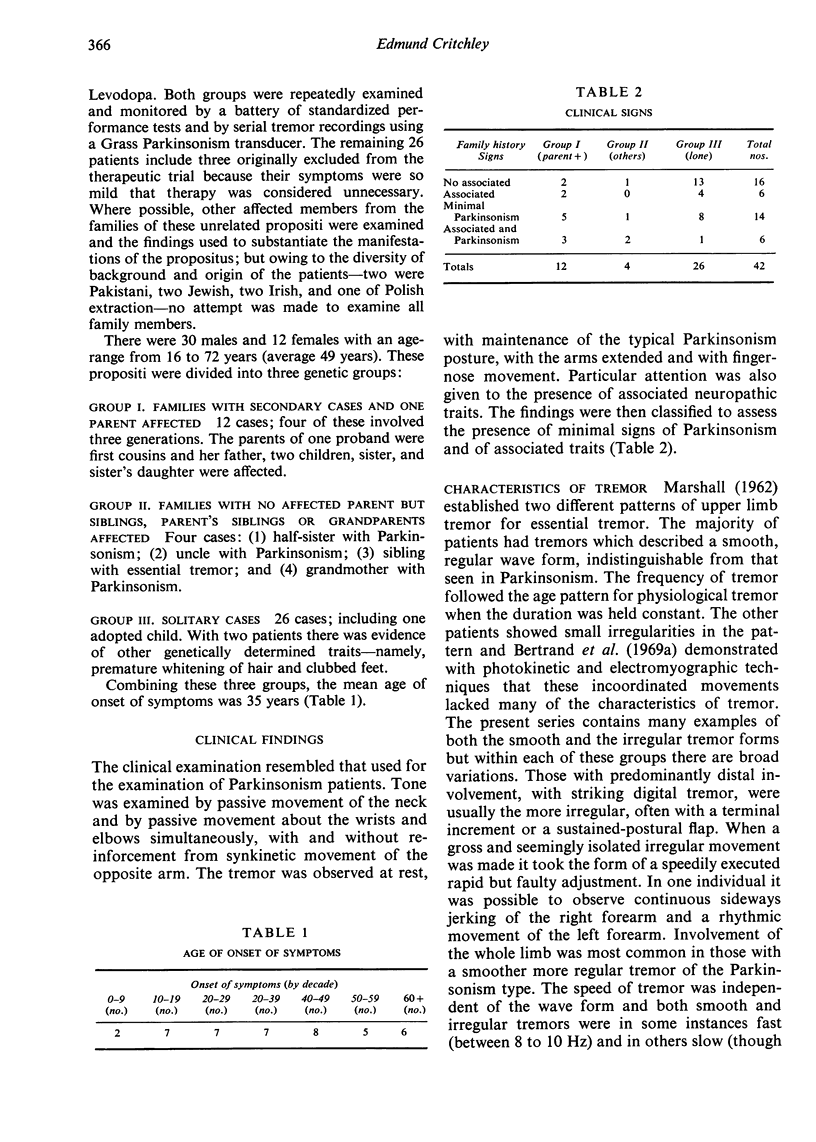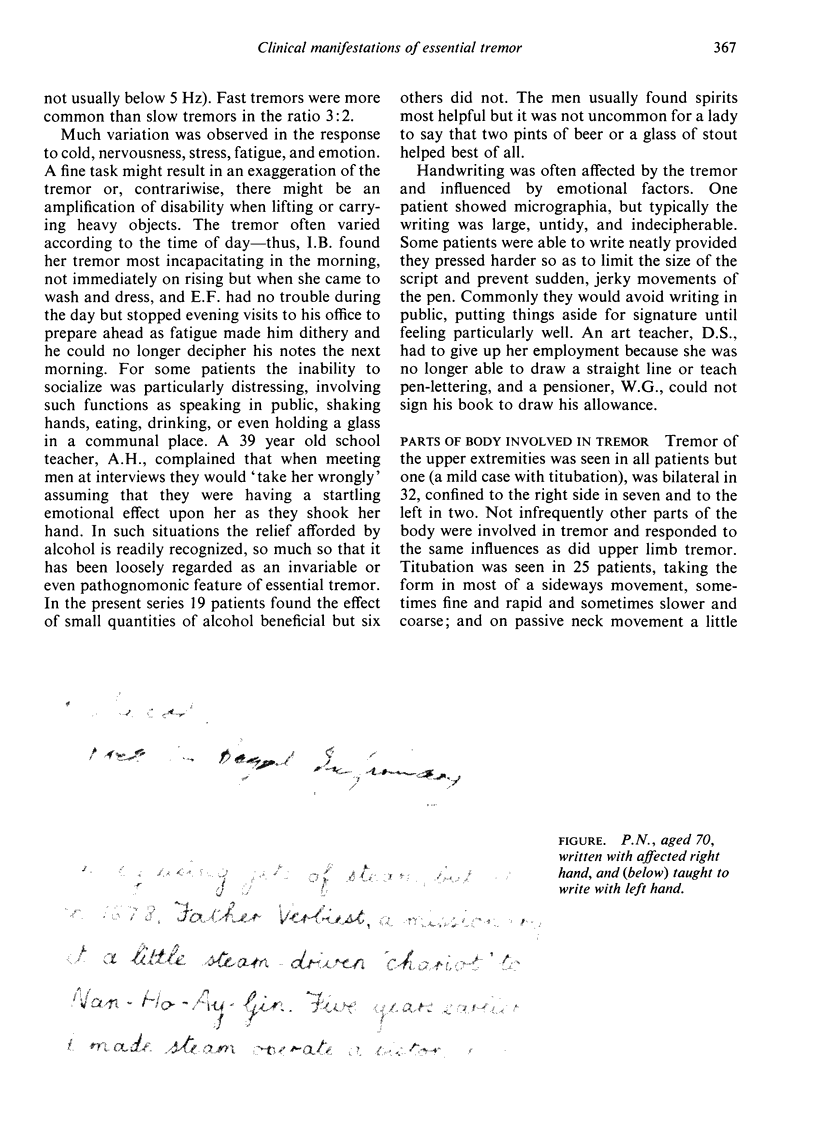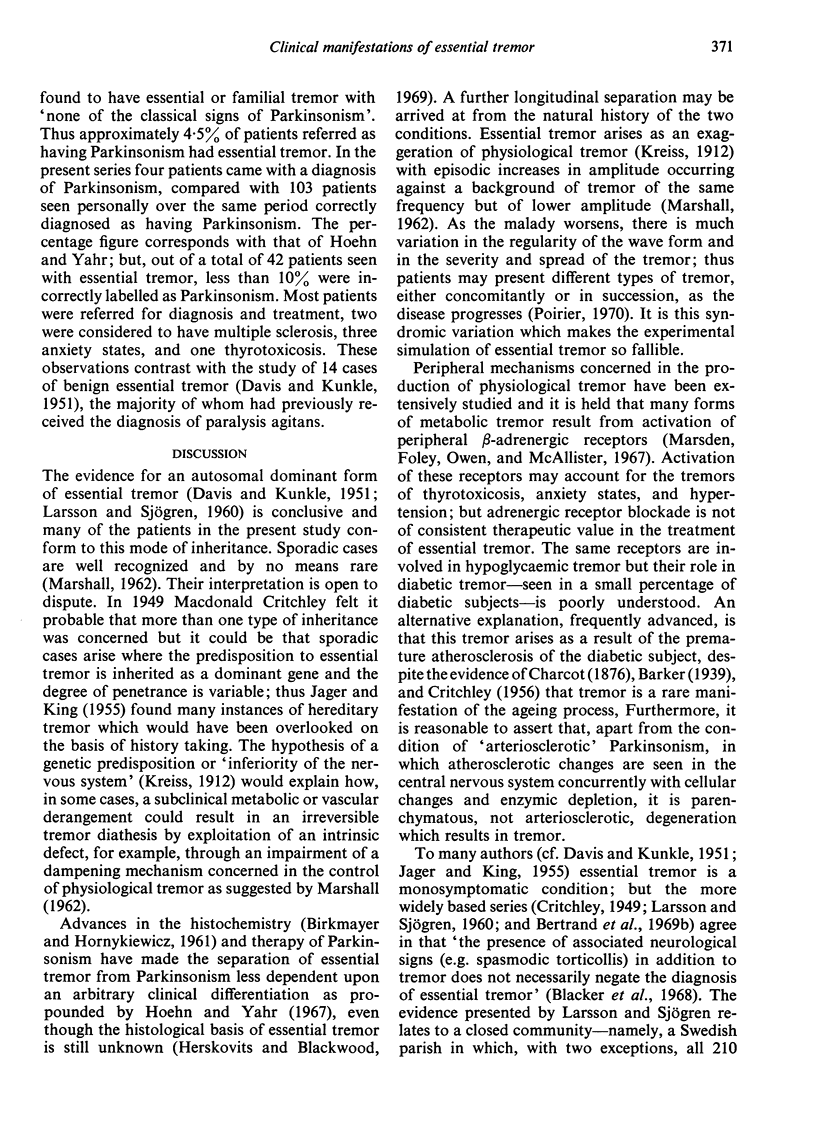Abstract
A clinical study of 42 patients with essential tremor is presented. In the case of 12 patients the family history strongly suggested an autosomal dominant mode of transmission, in four the mode of inheritance was indeterminate, and the remaining 26 patients were sporadic cases without an established genetic basis. The tremor involved the upper extremities in 41 patients, the head in 25, lower limbs in 15, and trunk in two. Seven patients showed involvement of speech. Variations were found in the speed and regularity of the tremor. Leg involvement took a variety of forms: (1) direct involvement by tremor; (2) a painful limp associated with forearm tremor; (3) associated dyskinetic movements; (4) ataxia; (5) foot clubbing; and (6) evidence of peroneal muscular atrophy. Several minor symptoms—hyperhidrosis, cramps, dyskinetic movements, and ataxia—were associated with essential tremor. Other features were linked phenotypically to the ataxias and system degenerations. Apart from minor alterations in tone, expression, and arm swing, features of Parkinsonism were notably absent.
Full text
PDF







Images in this article
Selected References
These references are in PubMed. This may not be the complete list of references from this article.
- BIRKMAYER W., HORNYKIEWICZ O. [The L-3,4-dioxyphenylalanine (DOPA)-effect in Parkinson-akinesia]. Wien Klin Wochenschr. 1961 Nov 10;73:787–788. [PubMed] [Google Scholar]
- Bertrand C., Hardy J., Molina-Negro P., Martinez S. N. Tremor of attitude. Confin Neurol. 1969;31(1):37–41. doi: 10.1159/000103460. [DOI] [PubMed] [Google Scholar]
- Blacker H. M., Bertrand C., Martinez N., Hardy J., Molina-Negro P. Hypotonia accompanying the neurosurgical relief of essential tremor. J Nerv Ment Dis. 1968 Jul;147(1):49–55. doi: 10.1097/00005053-196807000-00006. [DOI] [PubMed] [Google Scholar]
- CRITCHLEY M. Neurologic changes in the aged. J Chronic Dis. 1956 May;3(5):459–477. doi: 10.1016/0021-9681(56)90145-x. [DOI] [PubMed] [Google Scholar]
- DAVIS C. H., Jr, KUNKLE E. C. Benign essential (heredofamilial) tremor. AMA Arch Intern Med. 1951 Jun;87(6):808–816. doi: 10.1001/archinte.1951.03810060035004. [DOI] [PubMed] [Google Scholar]
- Herskovits E., Blackwood W. Essential (familial, hereditary) tremor: a case report. J Neurol Neurosurg Psychiatry. 1969 Dec;32(6):509–511. doi: 10.1136/jnnp.32.6.509. [DOI] [PMC free article] [PubMed] [Google Scholar]
- Hoehn M. M., Yahr M. D. Parkinsonism: onset, progression and mortality. Neurology. 1967 May;17(5):427–442. doi: 10.1212/wnl.17.5.427. [DOI] [PubMed] [Google Scholar]
- JAGER B. V., KING T. Hereditary tremor. AMA Arch Intern Med. 1955 Jun;95(6):788–793. doi: 10.1001/archinte.1955.00250120024003. [DOI] [PubMed] [Google Scholar]
- MARSHALL J. Observations on essential tremor. J Neurol Neurosurg Psychiatry. 1962 May;25:122–125. doi: 10.1136/jnnp.25.2.122. [DOI] [PMC free article] [PubMed] [Google Scholar]
- Marsden C. D., Foley T. H., Owen D. A., McAllister R. G. Peripheral beta-adrenergic receptors concerned with tremor. Clin Sci. 1967 Aug;33(1):53–65. [PubMed] [Google Scholar]



